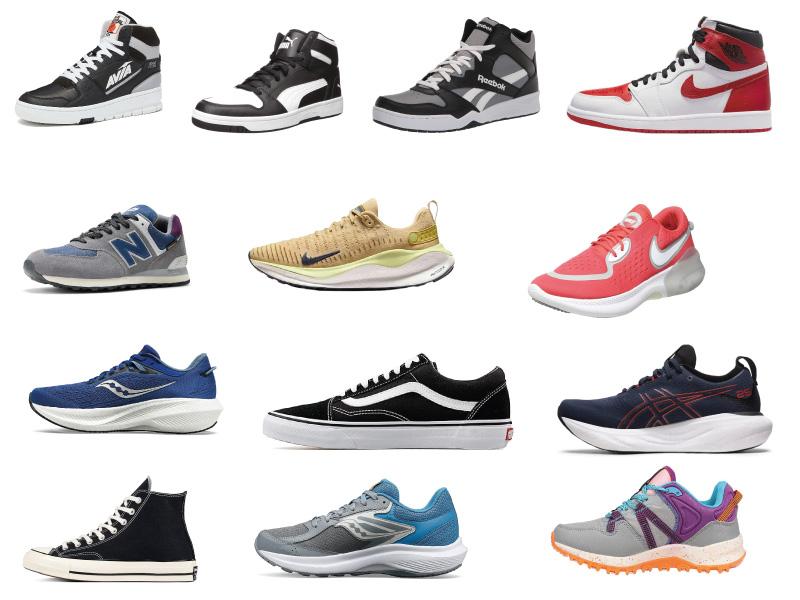
Welcome to the ultimate guide to sneakers, where we unravel the fascinating world behind these iconic shoes.
Sneakers aren't just footwear; they're a cultural phenomenon, a fashion statement, and a symbol of self-expression.
Whether you're a sneaker enthusiast, an athlete, or simply curious about the history and intricacies of this beloved footwear, you're in the right place.
From the origins of the name to identifying genuine pairs, from caring for your sneakers to exploring the best brands and most coveted styles, this comprehensive guide has you covered.
So lace up your kicks and join us on a journey through the fascinating universe of sneakers.
Introduction
Sneakers have become more than just a functional piece of footwear – they are a cultural icon, a fashion statement, and a collector's item.
These versatile shoes have transcended their humble beginnings as rubber-soled athletic shoes to become a multi-billion dollar industry, capturing the hearts and minds of people from all walks of life.
Whether you're a seasoned sneakerhead or just starting to appreciate the world of kicks, this comprehensive guide will take you on a journey through the fascinating history, styles, and culture surrounding sneakers.
What are sneakers?
At their core, sneakers are athletic shoes designed primarily for physical activities such as running, walking, and various sports.
However, in recent decades, sneakers have evolved into a fashion and lifestyle accessory, worn by people of all ages and backgrounds, both on and off the court.
Sneakers are lightweight, comfortable shoes designed for everyday wear and physical activities like walking, running, or playing sports.
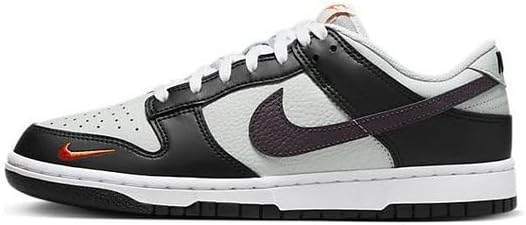
Typical Sneaker
Unlike formal shoes or boots, sneakers offer flexibility and cushioning to support the natural movement of the foot.
They have become a symbol of urban culture, fashion, and self-expression, transcending their utilitarian origins to become a style statement.
What is the origin of the name?
The term "sneaker" originated in the late 18th century, referring to the rubber soles that allowed people to "sneak" or walk quietly without making noise.
It refers to the quiet or stealthy way these shoes allow wearers to move without making much noise
This was a stark contrast to the clunky leather-soled shoes that were prevalent at the time.
Sneakers were initially marketed for their rubber soles, which made them ideal for activities like tennis, hence the alternative name "tennis shoes."
Why they are called "sneakers"
Sneakers got their name from the quiet, stealthy nature of their rubber soles.
Unlike traditional leather-soled shoes, which made a distinct clacking sound on hard surfaces, sneakers allowed wearers to move more silently or "sneak" around without drawing attention to their footsteps.
What is the historical background of sneakers?
The origins of sneakers can be traced back to the late 18th century when people began experimenting with different materials to create more comfortable and practical footwear.
One of the earliest examples of a sneaker-like shoe was the "plimsolls," a canvas shoe with a rubber sole, popularized in the 1830s by the Liverpool Rubber Company.
In the late 19th century, the U.S. Rubber Company (now known as Uniroyal) introduced the first rubber-soled shoes called "Keds," which quickly gained popularity among athletes and casual wearers alike.
The rise of basketball and other indoor sports in the early 20th century further fueled the demand for lightweight, non-marking shoes, leading to the development of iconic brands like Converse and their iconic Chuck Taylor All-Stars.
Brands like Converse and Keds pioneered the production of canvas sneakers, which gained widespread popularity among athletes and everyday consumers alike.
How do I identify sneakers?
While the definition of a sneaker may seem straightforward, there are a few key characteristics that distinguish them from other types of footwear:
Rubber or synthetic soles
Sneakers typically feature flexible, non-marking soles made of rubber or synthetic materials, designed for traction and cushioning during physical activities.
Lightweight construction
Sneakers are designed to be lightweight and comfortable, often constructed with breathable materials like canvas, mesh, or synthetic fabrics.
Low-cut or high-top design
Sneakers can be low-cut, exposing the ankle, or high-top, providing additional support and protection around the ankle area.
Lacing system
Most sneakers feature a lacing system that allows for a customizable fit and secure closure.
What are different types of sneakers?
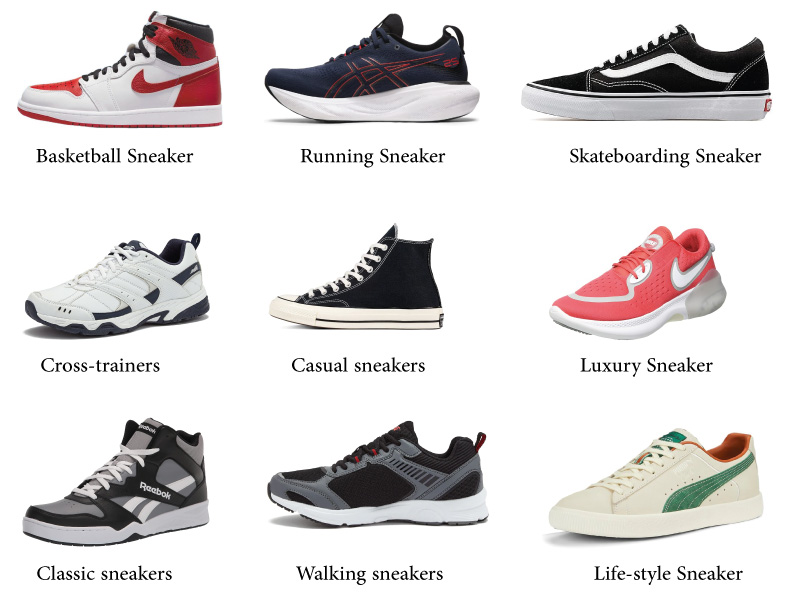
The sneaker world is vast and diverse, with numerous styles catering to various activities, aesthetics, and personal preferences. Here are some of the most common types of sneakers:
Running shoes
Designed specifically for running, these sneakers offer superior cushioning, support, and breathability to enhance performance and reduce the risk of injury.
Basketball shoes
With their sturdy construction, excellent traction, and ankle support, basketball sneakers are engineered for the rigors of the court.
Skateboarding shoes
Featuring flat, grippy soles and durable materials, skateboarding sneakers are built to withstand the wear and tear of the skatepark.
Cross-trainers
These versatile sneakers are suitable for a wide range of activities, from weightlifting to aerobics, providing a blend of support, flexibility, and cushioning.
Casual sneakers
Often stylish and comfortable, casual sneakers are designed for everyday wear, offering a balance of fashion and function.
Retro/Classic sneakers
Many iconic sneaker designs from decades past have been revived and reimagined, appealing to nostalgia and collectors alike.
Luxury sneakers
High-end fashion brands have embraced the sneaker trend, creating premium, often limited-edition models that blend luxury materials and craftsmanship with streetwear aesthetics.
What is the anatomy of sneakers?
While sneakers may appear simple at first glance, they are actually composed of various intricate components, each serving a specific purpose.
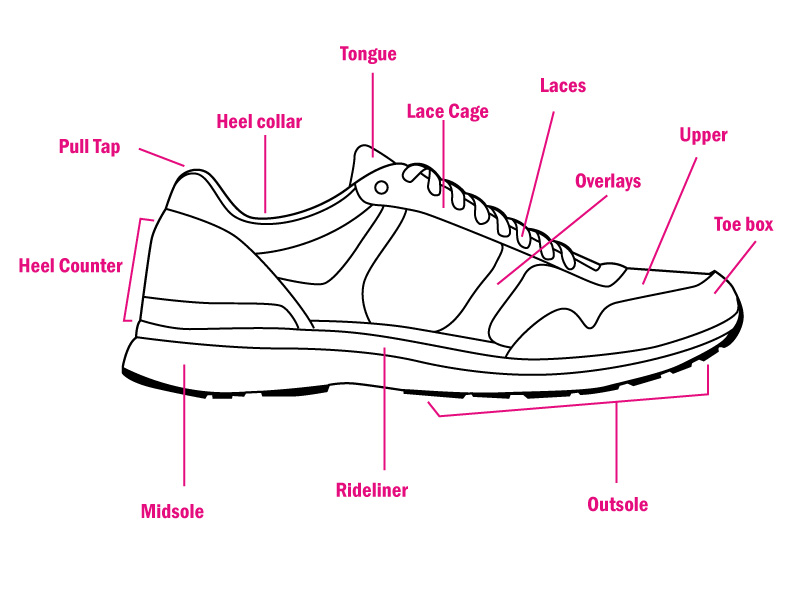
Understanding the anatomy of a sneaker can help you appreciate the craftsmanship and engineering that goes into their design.
Here are some of the key parts of a typical sneaker:
Upper
The upper is the main exterior portion of the sneaker that covers the foot. It can be made from various materials such as leather, mesh, canvas, or synthetic fabrics, and its design and construction can impact breathability, support, and overall aesthetics.
Toe box
The toe box is the front portion of the upper that accommodates and protects the toes. A well-designed toe box should provide ample room for natural toe movement and avoid excessive pressure or rubbing.
Tongue
The tongue is the padded section that sits on top of the foot and helps provide a comfortable fit. In some sneakers, the tongue is integrated with the upper for a sleeker look.
Collar
The collar is the padded section that surrounds the ankle area, offering support and cushioning. High-top sneakers typically have a taller collar for added ankle protection.
Laces
Laces are the straps or cords that allow you to tighten or loosen the fit of the sneaker around your foot. They can be made from various materials, including cotton, synthetic fibers, or even leather.
Midsole
The midsole is the layer between the outsole and the upper, designed to provide cushioning and shock absorption. It can be made from materials like EVA foam, polyurethane, or air-cushioned units.
Outsole
The outsole is the bottom part of the sneaker that makes direct contact with the ground. It is typically made from durable rubber or synthetic materials with traction patterns to provide grip and traction on various surfaces.
Heel counter
The heel counter is a rigid piece located at the back of the sneaker, designed to provide stability and support for the heel during movements.
Insole
The insole is the removable inner layer that rests directly beneath the foot. It can be made from various materials, including foam or cushioned fabrics, and can be replaced for added comfort or support.
How to take care of your sneakers
Investing in a quality pair of sneakers is only half the battle – proper care and maintenance are crucial to ensuring their longevity and preserving their appearance.
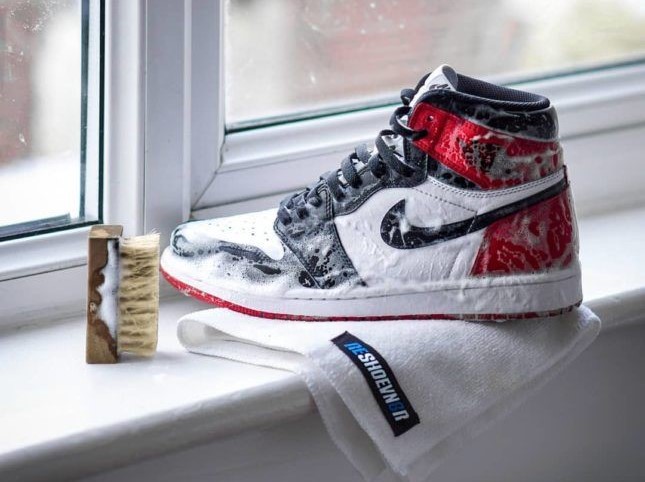
Here are some tips for taking care of your sneakers:
Cleaning
Regular cleaning is essential to keep your sneakers looking fresh. Use a soft-bristled brush and a gentle cleaning solution (or a mixture of warm water and mild soap) to remove dirt and stains. Avoid submerging your sneakers in water, as this can damage the materials and cause discoloration.
Air drying
After cleaning, stuff your sneakers with paper towels or a shoe tree to help them maintain their shape, and let them air dry completely before wearing them again.
Storage
When not in use, store your sneakers in a cool, dry place, away from direct sunlight and moisture. Consider using a breathable shoe box or storage container to protect them from dust and potential damage.
Rotation
Alternating between different pairs of sneakers can help prolong their lifespan by allowing them to air out and rest between wears.
Waterproofing and stain protection
For sneakers that will be exposed to the elements, consider applying a water-repellent spray or stain-resistant treatment to help protect against moisture and stains.
Lace maintenance
Replace frayed or worn laces to keep your sneakers looking fresh and prevent the risk of tripping or injuries.
What are the best sneaker brands?
The sneaker market is dominated by a handful of iconic brands that have earned their place through decades of innovation, quality, and cultural significance. While personal preferences may vary, here are some of the most renowned and sought-after sneaker brands:
Nike
One of the most recognizable and influential brands in the sneaker world, Nike has consistently pushed the boundaries of performance and style with iconic models like the Air Force 1, Air Jordan, and Air Max.
Adidas
With a rich heritage in athletic footwear, Adidas has produced numerous iconic sneakers, including the Stan Smith, Superstar, and Ultraboost, blending performance and fashion seamlessly.
Converse
Converse's iconic Chuck Taylor All-Stars have been a cultural staple for over a century, transcending their basketball origins to become a versatile and stylish canvas for self-expression.
Vans
Originating from skate culture, Vans has become a beloved brand for its iconic slip-on and lace-up models, renowned for their durability and distinctive style.
New Balance
Known for their commitment to quality and innovation, New Balance has gained a dedicated following for their performance-driven sneakers, as well as their collaborations with various designers and influencers.
Puma
With a strong focus on sports heritage and fashion-forward designs, Puma has produced memorable sneakers like the Suede and Clyde, appealing to both athletes and streetwear enthusiasts.
Reebok
Reebok has a long history in the sneaker game, with models like the Classic Leather and Pump Fury cementing their place in sneaker culture.
Asics
While primarily focused on performance running shoes, Asics has also gained a cult following among sneakerheads for their retro and lifestyle models, such as the Gel-Lyte III and Gel-Saga.
What are the most popular sneakers?
While personal preferences play a significant role in determining the popularity of sneakers, certain models have transcended their functional origins to become cultural icons and highly coveted collector's items. Here are some of the most popular and influential sneakers of all time:
Air Jordan 1
Released in 1985, Air Jordan 1 was the first signature sneaker for Michael Jordan and has since become one of the most iconic and sought-after sneakers ever produced.
Adidas Stan Smith
Introduced in the 1960s, Stan Smith has become a timeless classic, revered for its simplicity and versatility, and has been reissued in countless colorways and collaborations.
Converse Chuck Taylor All-Stars
These canvas high-tops have been a staple in sneaker culture for over a century, beloved for their iconic silhouette and endless customization possibilities.
Nike Air Force 1
First released in 1982, Air Force 1 has become a streetwear staple, with its clean lines and versatility making it a favorite among sneakerheads and casual wearers alike.
Vans Old Skool
Originally designed for skateboarders, Vans Old Skool has become a fashion icon, with its timeless silhouette and side stripe instantly recognizable on the streets and runways.
Adidas Ultraboost
Combining cutting-edge technology and sleek aesthetics, the Ultraboost has become a favorite among runners and sneaker enthusiasts, praised for its unparalleled comfort and style.
Nike Air Max 1
Air Max 1 was groundbreaking when it debuted in 1987, featuring a visible Air unit in the midsole – a design that has since become a signature element of the Air Max line.
Yeezy Boost 350
Kanye West's collaboration with Adidas has spawned a highly sought-after line of sneakers, with the Yeezy Boost 350 being one of the most coveted and influential models in recent years.
How to check if the sneakers are genuine or fake?
With the surge in popularity and demand for certain sneaker models, the market has also been flooded with counterfeit products. Identifying fake sneakers can be challenging, but there are several telltale signs to look out for:
Materials and construction
Genuine sneakers are made with high-quality materials and exhibit excellent craftsmanship. Fake sneakers often use cheaper materials and have sloppy stitching, glue stains, or misaligned patterns.
Branding and logos
Authentic sneakers feature crisp, correctly positioned branding and logos. Counterfeit sneakers may have blurry, misaligned, or misspelled logos or branding.
Packaging and accessories
Genuine sneakers usually come with authentic packaging, including boxes, tissue paper, and additional accessories like dust bags or extra laces. Fakes often have poorly replicated or missing packaging and accessories.
Price
If the price seems too good to be true, it's likely a counterfeit pair. Authentic sneakers from reputable brands rarely sell for significantly discounted prices, especially for highly coveted models.
Seller reputation
Purchase sneakers from authorized retailers or reputable resellers with a proven track record. Be wary of sellers on unofficial marketplaces or those with limited feedback or reviews.
Authentication services
For high-value or limited-edition sneakers, consider using professional authentication services that can thoroughly inspect the sneakers and verify their authenticity.
Where do fake sneakers come from?
Counterfeit sneakers are often produced in countries with lax intellectual property laws and regulations, as well as regions with significant manufacturing capabilities. Some of the major sources of fake sneakers include:
China
China has long been a hub for counterfeit goods, including sneakers, due to its vast manufacturing infrastructure and relatively lenient enforcement of intellectual property rights.
South Korea
While South Korea has stronger intellectual property laws, counterfeit sneakers have been known to originate from certain areas, particularly for popular models and brands.
Vietnam
Vietnam's proximity to China and its growing manufacturing sector have made it a source of counterfeit sneakers, particularly for replicas of popular models.
Thailand
Thailand has historically been a hotbed for counterfeit goods, including sneakers, with both local production and imports from neighboring countries contributing to the problem.
Online marketplaces
While not a physical location, various online marketplaces and e-commerce platforms have become a breeding ground for counterfeit sneaker sales, with sellers offering fake products at discounted prices.
How to avoid buying fake sneakers?
Protecting yourself from purchasing counterfeit sneakers is crucial, not only to ensure you receive an authentic product but also to support legitimate businesses and discourage the production of fakes. Here are some tips to help you avoid buying fake sneakers:
Buy from authorized retailers
Purchase sneakers directly from the brand's official website or authorized retailers. Reputable retailers have strict measures in place to ensure they only sell authentic products.
Research and verify sellers
If buying from a reseller or secondary market, thoroughly research and verify the seller's reputation. Check for positive reviews, feedback, and authentication processes they may offer.
Inspect the sneakers
Before making a purchase, carefully inspect the sneakers for any signs of counterfeit manufacturing, such as poor materials, sloppy construction, or incorrect branding and logos.
Use authentication services
For high-value or limited-edition sneakers, consider using professional authentication services to verify the sneakers' authenticity before making a purchase.
Be wary of deep discounts
Authentic sneakers from reputable brands rarely sell for significantly discounted prices, especially for highly coveted models. If the price seems too good to be true, it's likely a counterfeit.
Trust your instincts
If something feels off about the seller, the sneakers, or the overall transaction, it's better to err on the side of caution and walk away from the deal.
Final thoughts
Sneakers have evolved from their humble beginnings as functional athletic footwear to become a cultural phenomenon, transcending their practical purpose and inspiring a passionate community of collectors, enthusiasts, and fashion-forward individuals.
Whether you're a seasoned sneakerhead or just beginning to appreciate the world of kicks, understanding the history, styles, and culture surrounding sneakers can enhance your experience and help you navigate this vast and ever-evolving landscape.
From identifying genuine sneakers to caring for your prized pairs, this guide has provided a comprehensive overview of all things sneaker-related.
Remember, the joy of sneakers lies not only in their physical form but also in the stories they tell, the communities they foster, and the self-expression they enable.
Embrace the sneaker culture, and let your kicks be a reflection of your individuality and passion.
